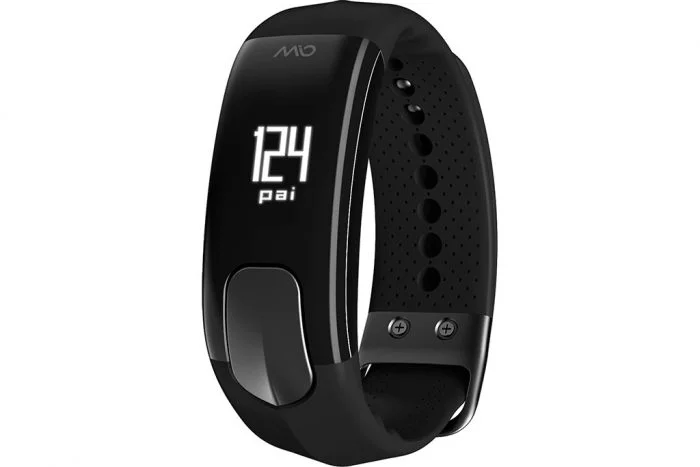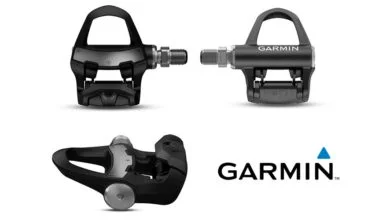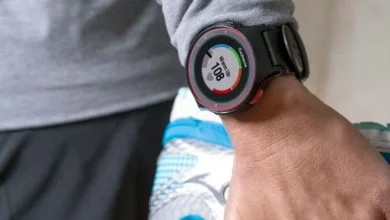Mio anuncia hoy un nuevo sensor de pulso óptico. Mio LINK 2 es el sustituto del LINK original (del que puedes ver aquí su prueba), y lo hace evolucionando el medidor de pulso óptico externo a un dispositivo más completo que permite grabar entrenamientos por sí mismo.
La esencia continúa siendo la misma. Mio LINK 2 es un sensor de pulso óptico que permite enviar datos de FC a otros dispositivos a través de ANT+ y Bluetooth de forma simultánea. Hasta aquí es lo mismo que hace el modelo original. ¿Entonces dónde está la novedad?
Pues empezamos por la forma. El Mio LINK original obligatoriamente había que colocarlo en una pulsera de silicona, Mio LINK 2 permite llevarlo en más sitios, al estilo de la propuesta que hicieron en Scosche hace unos años con su RHYTHM+ y que ha tenido mayor aceptación. De hecho recuerda bastante al sensor de Scosche.
Este diseño permite llevar el sensor en otros lugares del cuerpo, como en el antebrazo o en la parte superior del brazo. Ambas posibilidades son más cómodas si estás combinando el sensor externo con otro dispositivo de muñeca, como un reloj GPS.
Pero a diferencia del Scosche, el nuevo sensor de Mio (que Mio denomina módulo) no está integrado en el soporte, sino que se coloca sobre él. Por lo tanto es posible volver a la ubicación original de la muñeca, simplemente debes introducir el sensor en el accesorio adecuado.
La otra gran diferencia es que ahora el Mio LINK 2 se convierte en un dispositivo autónomo. Gracias a una memoria interna puede almacenar hasta 30 horas de entrenamientos, que podrás descargar después a tu teléfono a través de Bluetooth y transformar los datos de frecuencia cardíaca a una nueva métrica que inventaron en Mio hace un año: PAI. Y en cuanto al sensor de pulso óptico, tiene capacidad de registrar frecuencia cardíaca durante 20 horas.
Además incluye vibración, es resistente al agua hasta 50 metros de profundidad y dispone de NFC para una comunicación rápida con máquinas de gimnasio. Para ello Mio facilitará un SDK que permitirá integrarlo en gimnasios.
Mio LINK 2 llegará al mercado a lo largo de 2017 (o eso dicen… ver Mio Slice).
Mio Slice
Y hablando de cosas presentadas hace un año, en esa misma edición del CES Mio anunció un monitor de actividad que se llamaba Slice (ya hablé sobre él hace un año). ¿Y por qué vuelve ahora a rondar el CES? Pues porque a pesar de haberse anunciado que estaría disponible a lo largo de 2016, nunca llegó a estar a la venta.
Pero ahora sí alcanza la producción final, probablemente, gracias a la financiación extra que consiguieron a comienzos de noviembre. Quince millones de dólares que han permitido sacar el proyecto adelante y hacer realidad este monitor de actividad de diseño 100% propio.
El sensor de pulso que equipa Slice no es el que ya conocemos del viejo LINK (licenciado a Philips y con fantástico resultado), sino que es un desarrollo propio, pues el original no permite realizar seguimiento de frecuencia cardíaca durante 24 horas.
Todo en Mio Slice gira en torno a PAI, la nueva métrica que combina en un sólo registro los pasos, frecuencia cardíaca, intensidad de ejercicio, etc. El objetivo es tener una métrica algo más real que la estimación de pasos diarios.
La puntuación PAI se calcula basada en tu edad, sexo, frecuencia cardíaca en reposo y frecuencia cardíaca máxima. El cálculo es semanal, para intentar que estés activo durante los siete días de la semana (en lugar de tratar de recuperar un domingo los excesos de la semana). Cualquier actividad que haga subir la frecuencia cardíaca subirá tu puntuación PAI, pero a mayor intensidad más puntos ganarás. El objetivo es tener la puntuación por encima de 100.
Y ya volviendo al uso tradicional de los monitores de actividad, Mio Slice presenta los puntos básicos que cualquier dispositivo debe cubrir hoy en día. Notificaciones de tu teléfono móvil, seguimiento de actividad y sueño, estimación de pasos, calorías y distancia, etc.
Mio Slice estará disponible en febrero, a un precio de 129€. Algo similar al resto de la competencia, como Fitbit Charge 2 o Garmin Vivosmart HR.










Hola Eduardo, recien veo este artículo que escribiste sobre el Mio Link 2, sabes si ya hay fecha de lanzamiento de este producto?
Saludos,